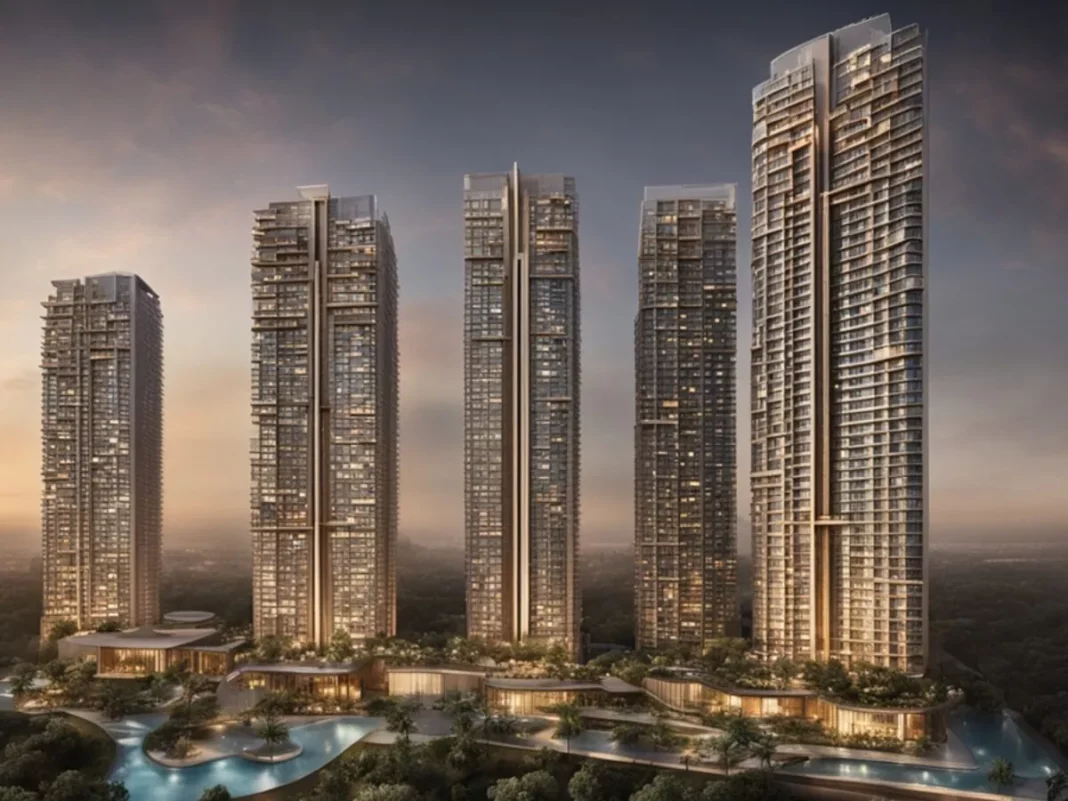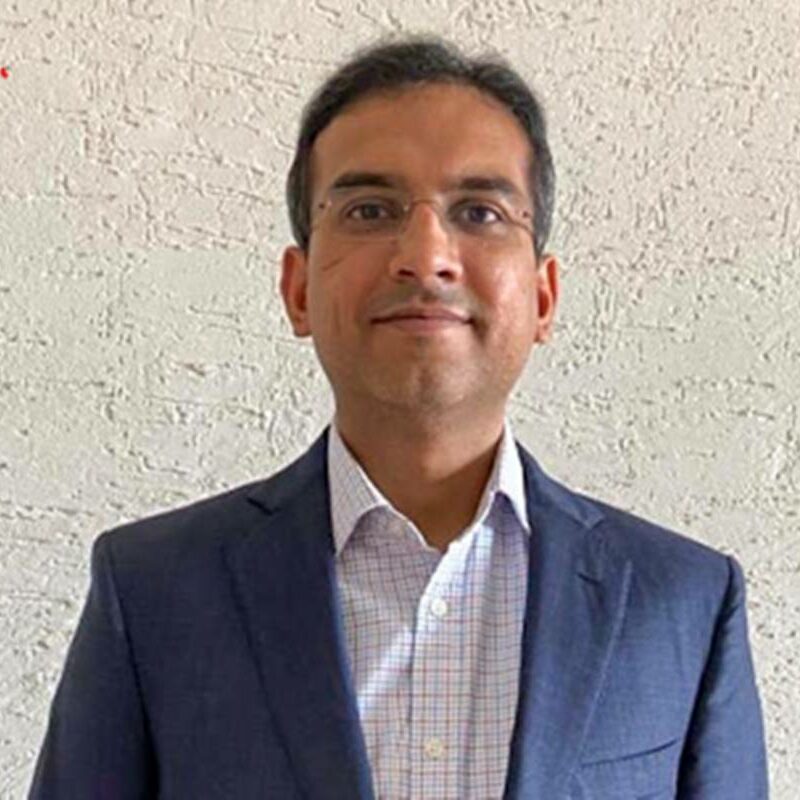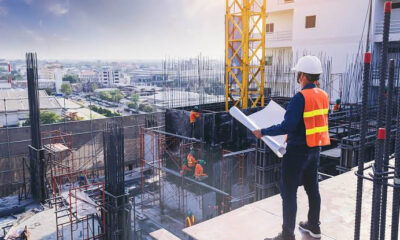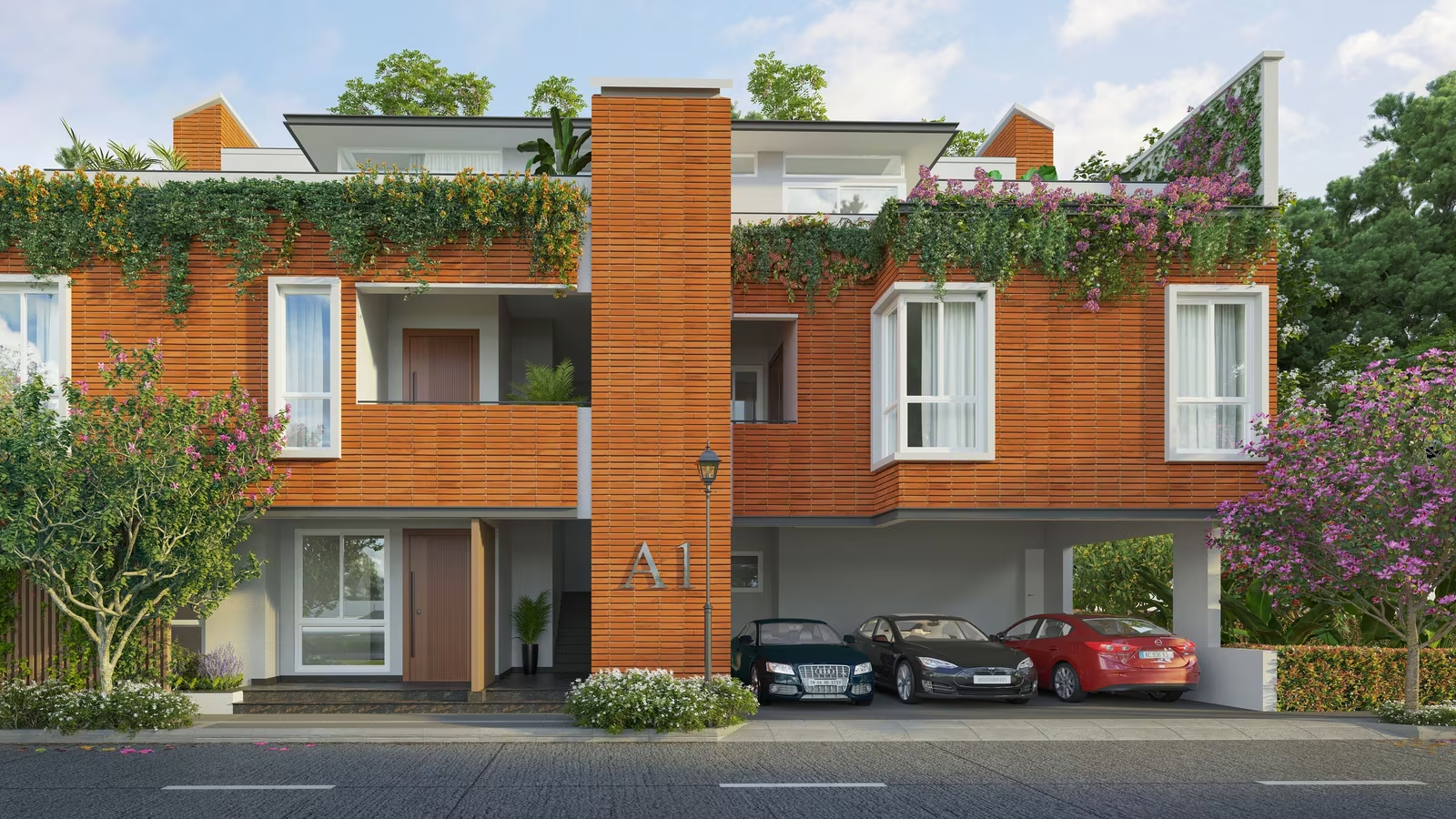News
Indian Real Estate Sector: Skyscraper In 2023, Realty Indices Too Surge Over 77% During the Year, Luxury Housing Shines Bright, Realty Set to Scale Higher In ‘24


Despite high interest rates and non-stop price hikes, the Indian real estate, especially the housing sector has witnessed an unprecedented growth in 2023. Without an iota of doubt, the industry players are unanimous that growth trajectory will continue in 2024 as well.
The country’s economy grew 7.6 per cent during the July-September quarter of the current financial year 2023-24 which was the highest in the world. Nifty Realty Index has surged by over 77 per cent so far this year. Sensex crossed 72,000 level to hit fresh all-time high and trend is still is bullish.
- Residential sales
Establishing a 15-year high, residential sales across the top 7 cities stood at approximately 4,76,530 units in 2023 against 3,64,870 units in 2022 – a 31 per cent annual growth.
New launches across the top 7 cities in 2023 saw 25% annual rise – from 3,57,640 units in 2022 to nearly 4,45,770 new units in 2023.
- Luxury Housing
It would not be an exaggeration to say luxury housing was the realty flavor of 2023. During 2023, nearly 23% of total new supply was added in the price bracket of over rs 1.5 Crores, as against 17% in 2022.
- Inventory
Strong sales in 2023 lead to sharp decline of inventory overhang; lowest since 2018. The inventory overhang declined to 15 months at the end of 2023 compared to 21 months, a year ago.
- MMR Leads
Mumbai Metropolitan Region, MMR, continued to be the largest residential market both in terms of value as well as volumes. MMR witnessed highest new units launches of 1,57,700 units in 2023, contributing nearly 35 per cent of the total supply of top-7 cities. With nearly 1,53,870 units sold in 2023, the city witnessed an annual increase of 40 per cent.
- Residential Prices
Northward journey of residential property prices continued, with a 10%-24% rise during the year, across the top 7 cities primarily due to an increase in the input costs and strong demand.
- Housing Rentals
Housing rents continued to soar across the top 7 cities during 2023, led by the prominent IT-ITeS hubs of Bengaluru, Hyderabad and Pune. The annual rise in rental values in these markets were in the range of 15% to 30%.
- Affordable Housing lagged
Affordable housing share continued to decline in new launches, with only 18% share in Pan India supply of 2023.
- Commercial Real Estate
Commercial Real Estate showed remarkable resilience amidst global slowdown. Rebound of large deals in Q4-2023 pushed the net leasing for 2023 to approximately 38 Mn sq ft, which is 5% more than 2022 but short of the last peak of 2019. Global capability centres, particularly in the technology and BFSI sectors, accounted for almost 40% of the significant deals in the top seven cities. Demand from flex operators stood at 8.7 Mn Sq ft, marking a 24% growth compared to 2022. The IT-ITeS sector to office leasing grew from around 50% in 2020 to 25% in 2023. The sectoral contributions from BFSI and engineering and manufacturing sectors have almost doubled, increasing from 10%-12% in 2020 to around 16% -20% in 2023.
Retail
India’s retail sector witnessed significant growth with retail development taking place in tier II and III cities, along with metros. Year 2023 witnessed highest supply of Grade-A malls in last 8 years. In 2023, supply of malls in the top cities touched ~5 Mn Sq ft, with over 80% being Grade-A category. With limited mall supply, prominent retailers have been exploring well-known main streets, which has led to strong demand and positive lease activity in recent years. During the year, leasing activity in the prominent main streets increased by 3% to 4% on year. Average vacancy levels in superior malls continued to remain tight within the range of 8%-10%. Strong demand contributed to the average rental appreciation of 8%-10% Y-o-Y, which is anticipated to last until 2024.
Realty pundits predict not only sustenance of this growth but a further surge. They attribute this optimism to expectations of a robust economic growth along with softening of interest rates. Post Covid, there has been a surge of home ownership concept. RERA too has a major contribution in restoring homebuyers’ confidence into the residential market.
Here are the excerpts of 2023 wrap-up and 2024 expectations from a cross section of realty bigwigs:


Dhruv Agarwala, Group CEO, Housing.com, Proptiger.com and Makaan.com
“As we reflect on 2023, it stands out as a landmark year in India’s real estate journey, characterised by unparalleled milestones and consistent growth. This year witnessed a significant upswing in property sales, surpassing the highs of 2019, signaling robust demand and elevated consumer confidence in a strengthening economy. This sets a positive tone for the industry’s future.
Despite initial hurdles, such as rising interest rates, increasing input costs, and soaring real estate prices amidst global uncertainties, the industry showcased exceptional resilience. The pent-up demand post-pandemic served as a key driver, elevating the property market to unprecedented levels. The Reserve Bank of India’s strategic pause on rate hikes in April 2023 played a crucial role in bolstering buyer confidence.
The residential sector saw a marked increase in demand across various price brackets. This growth also echoed in other segments, including office spaces, malls, co-working and co-living spaces, and the industrial & warehousing sector. Looking forward, the sector’s outlook remains optimistic, supported by factors like strong GDP growth, political stability, rapid urbanisation, increasing disposable incomes, and supportive government policies. At REA India we renew our pledge to uphold excellence and innovation, ready to embrace a future where our industry scales new heights, fuelled by the collective ambition of an evolving India.”


G Hari Babu, National President of NAREDCO
As we reflect on the year 2023, let’s applaud the indomitable spirit of the Indian real estate industry. Despite grappling with global uncertainties and economic challenges, the sector not only withstood the turbulence but emerged more robust and dynamic than ever before. Remarkably, we witnessed unprecedented growth in housing sales, fueled by a steadfast demand for affordable homes, an impressive upswing in the luxury segment, and the transformative influence of technology.
Looking ahead to 2024, we envisage a horizon brimming with optimism and opportunity. A stable economic landscape, complemented by government initiatives in infrastructure development and an increasing emphasis on sustainability, is poised to propel the real estate sector to new heights


Ankur Gupta, JMD, Ashiana Housing
Emerging trends are shaping the scene in the real estate landscape. Senior living and kid-centric homes are no longer uncommon. As more people age, there’s a rising need for secure spaces designed for seniors, featuring social activities and healthcare facilities.
In 2023, our projections included expectations of growth in conventional housing, accompanied by concerns about the potential impact of interest rates. Contrary to fears, there was no discernible effect on the housing market. Notably, the robustness of both the supply and demand sides became apparent, with low supply and high demand contributing to a minimal inventory overhang. This resilient trend is anticipated to persist through 2024 and 2025.
While we anticipate a moderation in price appreciation compared to the previous year, there remains a steadfast expectation of robust price increases. Although not reaching the levels witnessed in the preceding year, the market is poised for steady growth, affirming the enduring strength of both supply and demand dynamics.


Venkatesh Gopalakrishnan, MD & CEO, Shapoorji Pallonji Real Estate (SPRE)
“As we bid farewell to 2023, the real estate sector experienced a significant surge, with a remarkable increase of more than 90% in the demand for luxurious homes. This surge not only mirrors the aspirations of a growing middle class but also reflects the changing preferences of discerning homebuyers. The sector witnessed an unprecedented interest in premium residences, including plotted developments and villas, driven by factors such as urbanisation, evolving lifestyles, and a renewed focus on quality living.
Looking ahead to 2024, the dynamic landscape promises diverse opportunities beyond conventional realms. The upcoming year holds potential for those exploring emerging locations, innovative projects, and untapped geographical landscapes within the real estate sector. In this transformative journey, the Indian real estate sector stands as a beacon of progress, reflecting the nation’s resilience. As we enter the new year, let us anticipate a future where aspirational, luxurious living and premium lifestyles become a tangible reality for an even greater number of aspiring homebuyers.”


Gaurav Pandey, MD & CE0, Godrej Properties Ltd.
“Over the last two to three years, we have seen a turnaround in the sector. In 2023, India’s real estate landscape demonstrated significant growth as the demand for homes in India continued to gain momentum. Propelled by end-user-driven demand, both new launches and home sales showed positive momentum as the affordability of residential real estate in India remains in a sweet spot.
India’s rapidly growing economy, urbanization, and affluent population, the upswing in disposable income, the aspiration for modern spacious homes with better amenities, and the perception of real estate as a secure investment have also played a role in driving positive consumer sentiment.
Post-pandemic, homebuyers are increasingly inclined towards homeownership, seeking secure, sustainable, and multi-functional living spaces. This shift in preference has led to an uptick in home sales of upscale residential projects in India as today’s buyers prioritize homes that support a better post-pandemic way of living and are willing to pay a premium for quality residential developments. As a result, group housing projects in the mid-premium, premium-plus, and luxury segment are doing well.
Consolidation in the real estate sector and consumer preference towards reputed developers on the back of strong product offerings and consistent project additions are also providing a strong opportunity for reputed developers as demand remains consistent across consumer segments and various price points and micro-markets and it would be fair to say that the market would do good in the coming years.
Favourable macroeconomic indicators including India’s GDP growth being the highest in the world and the likelihood that interest rates are at or near their peak are expected to continue to drive positive momentum. Additionally, favourable government policies coupled with initiatives to streamline regulatory processes and promote affordable housing have further fuelled positive consumer sentiment. This has played a pivotal role in the overall growth of the domestic real estate sector”.


Parth Soni, Founder, Union-Living
The co-living space within the real estate sector has experienced a consistent and notable growth trajectory, with the year 2023 witnessing exceptional demand and high occupancy rates. Both students and corporate employees are increasingly turning to these accommodations for their convenience, hygiene standards, and elevated living experiences, complemented by a sense of community.
Looking ahead to growth prospects in 2024, the momentum is expected to continue. We have robust expansion plans that involve adding more beds to our existing markets, such as Mumbai, Pune, and Ahmedabad. Furthermore, we are strategically gearing up to enter new markets, including Gift City in Gujarat, recognizing the significant potential for such offerings in these areas. Currently operating 1100 beds and planning to scale to 4500 beds by the end of 2024 and grow from an ARR of 20 Crores to 100 Crores within next 12 months. Long term plan is to sign 5000 beds Built to suit premium coliving properties with various Developers at key locations like Baner in Pune, BKC, and Chembur in Mumbai.
These build-to-suit co-living spaces will also provide investors with an opportunity to invest for enhanced returns in this thriving market. This strategic move aligns with the evolving preferences of residents and the increasing recognition of coliving as a viable and lucrative real estate investment


Shravan Gupta, Founder & CEO, YOURS
The year 2023 marked a significant milestone for fractional ownership, particularly within the second or holiday home segment. Several factors contributed to the heightened demand for fractional ownership of luxury second homes, including the growing acceptance of this concept, rising property prices, and the willingness of affluent families to invest in holiday properties.
The recent guidelines issued by SEBI pertaining to fractional ownership and small REITs have further solidified the foundation for growth in this sector in 2024. The market exhibits substantial potential, and the coming years are anticipated to witness exponential growth in the fractional ownership segment. The evolving regulatory landscape and increasing recognition of the advantages associated with fractional ownership are expected to propel this market to new heights, making it a promising avenue for investors as well as end users.


Pushpender Singh, MD, JMS Group
The Indian real estate industry has been expanding at an unprecedented rate throughout 2023, solidifying its improvement across the country. With end-user customers, mainly in their mid-30s and beyond, wielding significant influence, the real estate sector has demonstrated enhanced resilience to fluctuations compared to its historical performance. The housing industry in India is undergoing a revolutionary phase in response to the uncertain global economic environment, adapting to shifting trends, such as advancing technology, demographic changes, local employment market dynamics, and the rise of remote work culture. The outlook for coming years is optimistic, with urbanization having already emerged as the primary driver. The demand for residential and commercial spaces will continue to experience exponential growth due to the surge in India’s urban population. Moreover, property prices will see a huge upsurge, with varying growth rates observed across different cities and regions and metropolitan areas witnessing higher price increases compared to smaller cities.


Ankit Gupta, Director, Reach Group
The year 2023 has marked another remarkable year for India’s real estate markets, experiencing an unprecedented surge in property transactions that surpassed the previous highs of 2013-14. This surge in demand has been truly exceptional, reflecting a noteworthy boost in market dynamics and increased confidence among homebuyers. The heightened level of property transactions observed this year serves as a testament to the enhanced resilience and maturity of the real estate sector.
The encouraging trend indicates a positive shift in both market sentiment and the confidence of homebuyers, contributing to a more robust and stable real estate landscape. As we look ahead to 2024, the outlook remains optimistic, with expectations of sustained demand. The stability of macroeconomic parameters is anticipated to be a key factor supporting continued growth, fostering an environment conducive for investments in the real estate market.


Prashant Rao, Managing Director, Poulomi Estates
The year 2023 marked a pinnacle in Hyderabad’s real estate landscape, propelled by substantial investments that poured into the city. Government initiatives, including infrastructure projects and improved internal roads to alleviate traffic, played a pivotal role. Simultaneously, there was a heightened realization among people about the importance of spacious homes, leading to a resurgence in real estate investments.
This transformative year saw the emergence of a new housing segment in Hyderabad—the premium, ultra-rich, or large-format apartment category. Unlike previous years, where apartments were limited to 4000 square feet, 2023 witnessed the launch and enthusiastic acceptance of apartments ranging from 6000 to 15000 square feet, presenting an entirely novel dimension in the market.
Notably, the last seven months alone witnessed the leasing of close to 6.5 million sq ft of IT space in Hyderabad, indicating a thriving commercial real estate sector. With these transformative trends, 2024 is anticipated to surpass expectations, propelling Hyderabad to new heights. The city is poised for superior growth compared to other metros, driven by a surge in income and a burgeoning economy, which have contributed significantly to the increased demand for luxury housing, both nationally and prominently in Hyderabad.


Badal Yagnik, CEO, Colliers India
Although, the start of the year was cautious, 2023 is on course to become one of the best-performing years in real estate sector across asset classes. Leasing activity in office market is inching towards 50 mn sq.ft. comfortably; residential activity remains robust with sales and launches likely to breach 2022 levels convincingly. After two consecutive years of significant recovery and sturdy growth, 2024 is likely to be a year of redemption where real estate will reshape, restructure and realign on a stronger domestic footing. In addition to heightened focus on sustainability, a mix of core plus flex strategy will characterise the commercial real estate market of India, even in the smaller Tier II cities. Active institutional investor pursuit for prime ventures in office, residential, data centre, logistics and shared space markets will extend India’s decisive positioning in real estate-specific investments within the APAC region.”


Shrinivas Rao, FRICS, CEO, Vestian
“Despite an uncertain start to the year 2023, the Indian economy and more so, the real estate sector performed well. Government’s infrastructure push increased domestic demand, corporates’ back-to-work strategies, and rise in e-commerce kept the real estate market buoyant during the current year.
Rapidly changing real estate dynamics in the current year are likely to take shape as markets stabilize in 2024. Furthermore, tier-2 cities are likely to see increased traction on the back of affordability, abundance of local talent pool, and a robust pipeline of planned infrastructure projects. The future of Indian real estate sector is promising with a core focus on sustainability and innovation.”


Amal Mishra, Co-founder, UrbanVault
The year 2023 has proven to be highly successful for managed flexible and co-working spaces, witnessing a significant resurgence in demand following the setbacks experienced during the COVID-19 pandemic. This revival has outpaced the available supply, marking a recovery in the flexi space market.
At Urban Vault, we’ve taken proactive steps to elevate the customer experience by offering amenities beyond the conventional standards and providing customised solution to our clients. The growth of flexible workspaces is back on a positive trajectory, and 2024 is poised to be a transformative year for the flex office segment.


Kezya De Bragança, CEO & Founder, Bettamint
The Indian construction industry is set for a massive leap in 2024, and with it the need for a larger, well supported workforce. Facing a 400% annual turnover rate and persistent labour shortages, it’s clear that the construction industry requires an overhaul of its approach to workforce management. Fair wages, skill building, safe working and clean living conditions, and job security are not just perks, but necessities to make the industry a sought-after place to work. Government-led unique IDs for workers and tech innovations from companies like Bettamint to digitize manpower operations on construction sites, we’re laying the groundwork for a more resilient, attractive sector all while also improving the pace and quality of construction. It’s crucial that as construction booms, must translate to tangible benefits to workers, ensuring that the sector’s growth is inclusive and sustainable.


Ajeet Kumar Singh, MD, CEO and Co-Founder, SAVE Solutions
“2024 is going to be a promising year in terms of growth in home loan demands and the services provided by the housing sector in Tier 2 cities. With urbanization reaching the hearts of Tier 2 cities, the housing finance sector is already witnessing a good number of inquiries every day. In the coming year, many housing companies will be focussed on reaching as many customers as possible from different sections of the society. Building a home for people of the marginalized section is often a far-fetched dream. Due to incomplete documents and complex cash flow assessments, banks sometimes overlook the financial needs of these communities in small cities. Housing companies will be seen utilizing resources for the lower middle-class section which will help them make this dream a reality in the coming years. Customers will also be given more power in 2024 to make decisions and choose their monthly installment plans and live a more financially secure life.”
-



 News4 weeks ago
News4 weeks agoKW Delhi 6 Mall Onboards New Brands
-



 News4 weeks ago
News4 weeks agoManasum Senior Living Launches IKIGAI GOA, A Senior Living Community in North Goa, in collaboration with Prescon Homes
-



 News4 weeks ago
News4 weeks agoBridging India Divide: Top 5 Tier- 2 Cities to Focus On
-



 News4 weeks ago
News4 weeks agoCommercial Realty Gets Tech Savvy: Fast Construction, Enhanced Convenience
-



 News3 weeks ago
News3 weeks agoGodrej Properties Sells Rs 3k cr+ Homes of Godrej Zenith, Gurugram, within 3 days
-



 News4 weeks ago
News4 weeks agoMultipoint Connection – A Definite Boon
-



 News3 weeks ago
News3 weeks agoRBI’s Status Quo on Key Policy Rates to Help Maintain the Real Estate Growth Momentum, Say Industry Stalwarts
-



 News2 weeks ago
News2 weeks agoOlive Announces Dhruv Kalro as Co-Founder
















